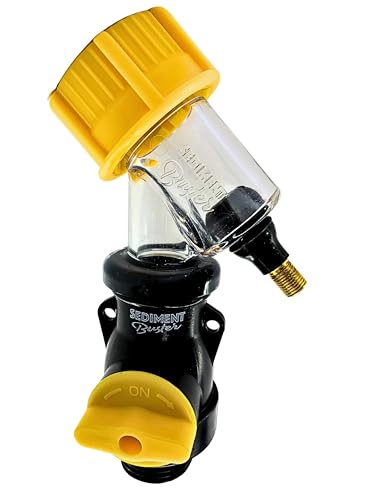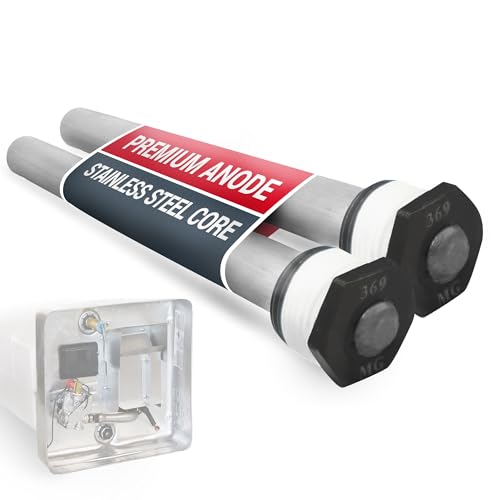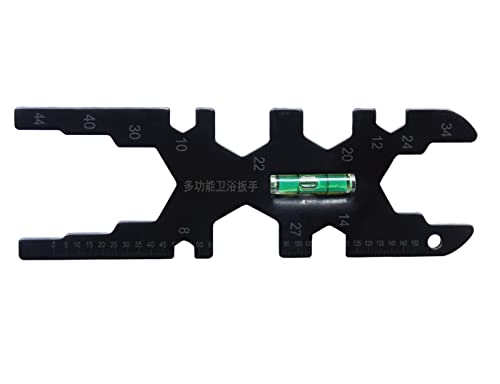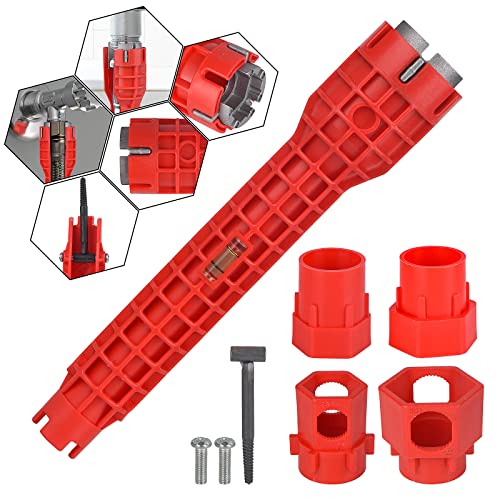You are using an out of date browser. It may not display this or other websites correctly.
You should upgrade or use an alternative browser.
You should upgrade or use an alternative browser.
HVAC Condensate Drain
- Thread starter CADru
- Start date

Help Support Plumbing Forums:
This site may earn a commission from merchant affiliate
links, including eBay, Amazon, and others.
No, a condensate drain line CANNOT be hard piped into a sanitary sewer.
It’s called an “air gap” and it’s there by design. In addition to creating an air gap by doing things the way your photo shows, you can also purchase a device to do the same thing which is a little neater and tidier, and has threaded fittings: https://a.co/d/dhK4skxCan the end of a condensate drain line have a hard pipe connection? I see open ended hoses dumping into laundry tubs, sump pumps, all open ended (not connected) drain lines.
Attached: HVAC condensate drain line (end of line)
CADru
Member
Thank you for the "air-gap" reference @Mitchell-DIY-Guy. With this info in my pocket & additional research:
From NACHI
Why Not Direct Connection?:
From NACHI
Why Not Direct Connection?:
- Directly connecting condensate lines to a DWV (drain-waste-vent) pipe is prohibited in some locations.
- The potential danger is that sewer gases may enter the house through the condensate drain line.
- Even with a trap, direct connections can allow sewer gas to enter the air handler, which is unsafe and unhealthy.
https://forum.nachi.org/t/condensate-drains-and-air-gaps-why/191649/16
If you had a fixture close by you could connect it to a dishwasher tee on the house side of the Ptrap.
Check with your inspector. I have to say that or panties get pissed in.
Check with your inspector. I have to say that or panties get pissed in.
I didn't open up your picture and I thought the black hose was the condensate line. So, after Mitchell-DIY-Guy said there was an "air-gap" there, I opened up the picture. You have an "air-break" that is kinda the same. It depends on how far down the vinyl tubing goes down the rubber hose. If it goes pretty far, an inspector could flag it as there is a chance alga could grow and "seal" the annular space between the vinyl tubing and the rubber hose making that essentially a hard piped connection.Thank you for the "air-gap" reference @Mitchell-DIY-Guy. With this info in my pocket & additional research:
From NACHI
Why Not Direct Connection?:
- Directly connecting condensate lines to a DWV (drain-waste-vent) pipe is prohibited in some locations.
- The potential danger is that sewer gases may enter the house through the condensate drain line.
- Even with a trap, direct connections can allow sewer gas to enter the air handler, which is unsafe and unhealthy.
https://forum.nachi.org/t/condensate-drains-and-air-gaps-why/191649/16
And in opening the picture, I see several things that are a little strange looking.
There is a hose connected to a line with check valve in it that connects to the drain ahead of the condensate hose. What is that for? And what is the gate valve hard piped to the drain line for? Where does that line originate? The copper wye fitting the condensate drain line connects to the vertical drain is wrong as is the depth of the P-trap made out of copper fittings. What fixtures are draining down the vertical line?
Can you provide a sketch of you drain and vent lines in this area?

$42.56
$49.60
RIDGID 29983 Model 223S 1/4" to 1-1/4" Inner/Outer Copper and Stainless Steel Tubing and Pipe Reamer, Small
Amazon.com

$4.99 ($1.00 / Ounce)
Latwne Kitchen Repair Plumbing Tool Sink Faucet Key Plumbing Pipe Four-Claw Wrench Bathroom Wrench Tool Sets 4 Bayonet
ShiYanShiXiaoZhuoShangMaoYouXianGongSi

$45.56
$69.99
Rain Bird LNDDRIPKIT Drip Irrigation Landscape/Garden Watering Kit with Drippers, Micro-Bubblers, Micro-Sprays
Amazon.com

$32.98 ($5.50 / Count)
Membrane Solutions 5 Micron 10"x2.5" String Wound Whole House Water Filter Replacement Cartridge Universal Sediment Filters for Well Water - 6 Pack
Membrane Solutions Corp

$14.55
$16.99
Camco Aluminum Anode Rod- Extends the Life of Water Heaters by Attracting Corrosive Elements, Tank Corrosion Protection (11563)
The GENERAL Store

$24.79 ($6.20 / Count)
$31.99 ($8.00 / Count)
1 Micron 2.5" x 10" Whole House CTO Carbon Water Filter Cartridge Replacement for Under Sink Water Filter System, Dupont WFPFC8002, WFPFC9001, FXWTC, SCWH-5, WHEF-WHWC, WHCF-WHWC, AMZN-SCWH-5, 4Pack
PUREPLUS FILTERS

$27.19
$32.15
RIDGID 57003 EZ Change Plumbing Wrench Faucet Installation and Removal Tool
Amazon.com

$345.00
3M Aqua-Pure Whole House Sanitary Quick Change Water Filter System AP903, Reduces Sediment, Chlorine Taste and Odor, Heavy Duty, 100,000 Gallon
Buying Direct Corp: Free & Fast Shipping
CADru
Member
This all started with me wanting to replace my laundry tub pump, I would like to address entire drainage system in this area. I don't know why that gate valve and vertical pipe is hard piped into the drain, makes no sense to me. House was built in 1954, have no historical data.I didn't open up your picture and I thought the black hose was the condensate line. So, after Mitchell-DIY-Guy said there was an "air-gap" there, I opened up the picture. You have an "air-break" that is kinda the same. It depends on how far down the vinyl tubing goes down the rubber hose. If it goes pretty far, an inspector could flag it as there is a chance alga could grow and "seal" the annular space between the vinyl tubing and the rubber hose making that essentially a hard piped connection.
And in opening the picture, I see several things that are a little strange looking.
There is a hose connected to a line with check valve in it that connects to the drain ahead of the condensate hose. What is that for? And what is the gate valve hard piped to the drain line for? Where does that line originate? The copper wye fitting the condensate drain line connects to the vertical drain is wrong as is the depth of the P-trap made out of copper fittings. What fixtures are draining down the vertical line?
Can you provide a sketch of you drain and vent lines in this area?
My sketch diagrams all fixture drains and vents connected.
I want make some changes to get this up to code and a cleaner layout as I move forward with laundry tub pump replacement.
Thanks
Attachments
He might have a possibility of sewage backflow so it’s running through a check valve. Can’t be an air break if it’s running through a check valve.
PeterMelazh
New Member
Yes, you can absolutely have a hard pipe connection at the end of a condensate drain line. It's a good way to keep things neat and secure. Just make sure the pipe is properly sloped so the water can flow easily.
It’s not that simple here in America.Yes, you can absolutely have a hard pipe connection at the end of a condensate drain line. It's a good way to keep things neat and secure. Just make sure the pipe is properly sloped so the water can flow easily.
In the USA, our codes do not allow that. A P-trap would be required to be in that line to keep sewer gases from getting into the HVAC air handler. But as our A/Cs do not run all year long in most of the states, the seal provided by the P-trap will evaporate and allow sewer gases to pass through it.Yes, you can absolutely have a hard pipe connection at the end of a condensate drain line. It's a good way to keep things neat and secure. Just make sure the pipe is properly sloped so the water can flow easily.
Yes, you could a trap primer on it or add mineral oil to it in non-A/C weather, but our codes do not recognize those as acceptable mitigation of a possible dry trap.
Most Americans (certainly those amateurs and professionals here) who travel abroad can be puzzled by plumbing in foreign lands…
Toilet tanks built into a wall, toilet tanks 6’ above the bowl, the lack of mixing faucets, non-pressurized hot water delivery, Asian pit/squat toilets to name a few are head scratchers to me used to good old highly developed American plumbing practices…
plumbing practices…
Toilet tanks built into a wall, toilet tanks 6’ above the bowl, the lack of mixing faucets, non-pressurized hot water delivery, Asian pit/squat toilets to name a few are head scratchers to me used to good old highly developed American
So, I had my A/C contractor come here last week to service my heating and both A/C systems. We got onto the topic of condensate line discharging into the sewer vent pipes, and he said he has been doing this for years. I asked if inspectors ever catch this mistake and he said most in So Cal approve this method, provided your discharge pipe is solidly connected, and you allow an air break in your condensate line.
I really find this hard to believe, especially since California is known for their Building Code Nazi's.
I really find this hard to believe, especially since California is known for their Building Code Nazi's.
CADru
Member
And there is no vent on my washing machine discharge. This has been connected like this for years. Is it possible that standing water in the discharge hose (washing machine side of check valve) is a concern?He might have a possibility of sewage backflow so it’s running through a check valve. Can’t be an air break if it’s running through a check valve.













































